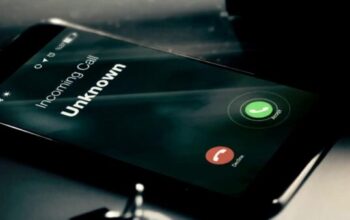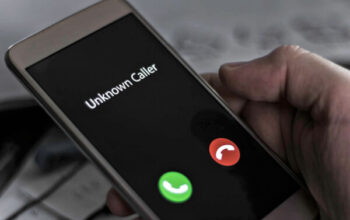In this article, we will explore the common and frustrating issue faced by many computer users – the “MSVCP140.dll File Is Missing” error. We’ll delve into the root causes of the problem and provide step-by-step solutions to fix it. Whether you’re a tech-savvy individual or a casual computer user, we’ve got you covered with easy-to-follow instructions to resolve this issue and get your system running smoothly again.
Understanding the MSVCP140.dll Error
What is MSVCP140.dll?
MSVCP140.dll is a vital Dynamic Link Library (DLL) file in the Microsoft Visual C++ Redistributable Package. It contains essential functions that numerous applications use to run properly. When this file is missing or corrupted, it can result in various errors, and one common issue is the “MSVCP140.dll File Is Missing” error.
Causes of the “MSVCP140.dll File Is Missing” Error
Several reasons can trigger this error, including:
- Outdated Windows System: If your Windows operating system is not up-to-date, it can lead to compatibility issues with the MSVCP140.dll file.
- Corrupted MSVCP140.dll File: The DLL file may get corrupted due to unexpected system shutdowns, malware infections, or hardware failures.
- Incompatible Application: Certain applications might require a specific version of the MSVCP140.dll file, and if it’s not present, the error may occur.
- Faulty Device Drivers: Outdated or incompatible device drivers can interfere with the proper functioning of DLL files.
Checking for System Updates
To begin troubleshooting, ensure that your system is up-to-date.
Windows Update
- Press the Windows key and “I” simultaneously to open the Settings menu.
- Go to “Update & Security” and click on “Windows Update.”
- Click “Check for Updates” and wait for the process to complete.
- Install any available updates and restart your computer.
Microsoft Visual C++ Redistributable Package
- Open your web browser and visit the official Microsoft website.
- Search for the latest version of “Microsoft Visual C++ Redistributable Package.”
- Download the package compatible with your system.
- Run the installer and follow the on-screen instructions to complete the installation.
- Restart your computer to apply the changes.
Reinstalling Microsoft Visual C++ Redistributable Package
If updating the package didn’t resolve the issue, try reinstalling it.
Uninstalling the Existing Package
- Press “Windows + R,” type “appwiz.cpl,” and press “Enter” to open the “Programs and Features” window.
- Locate “Microsoft Visual C++ Redistributable Package” in the list.
- Right-click on it and select “Uninstall.”
- Follow the prompts to remove the package completely.
Downloading and Installing the Latest Package
- Visit the official Microsoft website and download the latest version of the “Microsoft Visual C++ Redistributable Package.”
- Run the installer and follow the on-screen instructions for installation.
- Restart your computer after the installation is complete.
Verifying System Integrity with SFC Scan
System File Checker (SFC) scan can help fix corrupted files.
Running System File Checker (SFC) Scan
- Press “Windows + X” and select “Windows Terminal (Admin)” to open Command Prompt with administrative privileges.
- Type “sfc /scannow” and press “Enter.”
- The scan will take some time to complete. Wait for it to finish.
Interpreting SFC Scan Results
If the scan finds and repairs any issues, restart your computer and check if the error is resolved. If not, proceed to the next step.
Updating Device Drivers
Outdated or faulty device drivers can cause DLL errors.
Using Device Manager
- Right-click on the “Start” button and select “Device Manager.”
- Expand the categories and find the devices with outdated drivers.
- Right-click on each device and select “Update driver.”
- Choose “Search automatically for updated driver software” and follow the prompts.
Manual Driver Update from Manufacturer’s Website
- Identify the devices that need driver updates.
- Visit the manufacturer’s website and locate the latest drivers for your devices.
- Download the drivers and install them manually.
- Restart your computer to apply the changes.
Performing a Clean Windows Installation
If all else fails, consider performing a clean installation of Windows.
Backing Up Important Data
Transfer all important files to an external storage device or cloud storage.
Fresh Windows Installation
- Create a bootable Windows installation media using a USB drive or DVD.
- Restart your computer with the installation media connected.
- Follow the on-screen instructions to perform a clean installation of Windows.
- Restore your backed-up data after the installation is complete.
Utilizing DLL Repair Tools
DLL repair tools can automatically fix DLL errors.
Understanding DLL Repair Tools
- DLL repair tools are software designed to identify and repair DLL errors.
- They scan your system for corrupted or missing DLL files and attempt to fix them.
Recommended DLL Repair Tools
- DLLFixer
- CCleaner
- DLL-Files Fixer
Conclusion
The “MSVCP140.dll File Is Missing” error can be frustrating, but it’s not insurmountable. By following the steps outlined in this guide, you can resolve the issue and get your computer back in working order. Remember always to keep your system updated and use reliable DLL repair tools for efficient troubleshooting.
FAQs
Q 1: Can I manually replace the missing MSVCP140.dll file?
A: It’s not recommended to manually replace DLL files, as it can lead to further issues. Instead, reinstall the Microsoft Visual C++ Redistributable Package.
Q 2: Do I need to purchase a DLL repair tool?
A: Some DLL repair tools offer free versions with limited functionality. However, for comprehensive repairs and ongoing maintenance, a premium version may be worth considering.
Q 3: What should I do if the error persists after trying all the solutions?
A: If the error persists, consider seeking help from a professional technician or a computer support forum.
Q 4: Can I use System Restore as a permanent solution for the error?
A: System Restore is intended for resolving specific issues caused by recent changes. It’s not a permanent solution, but it can be helpful in certain cases.
Q 5: Is it necessary to perform a clean Windows installation?
A: A clean Windows installation is usually the last resort when all other solutions fail. Make sure to back up your important data before proceeding with this option.




